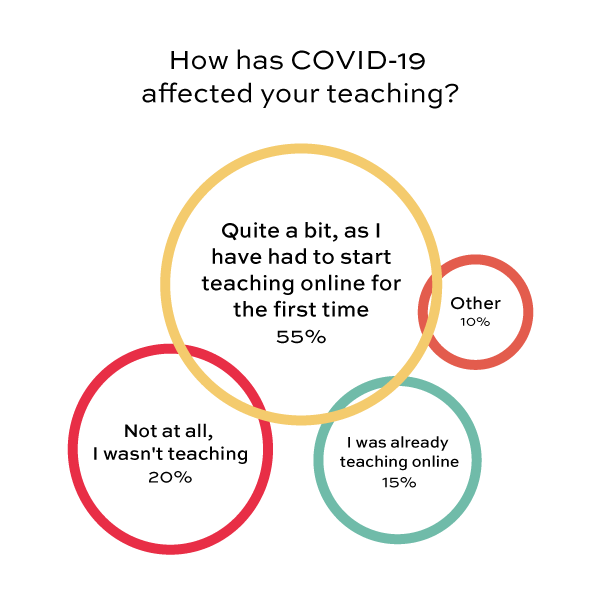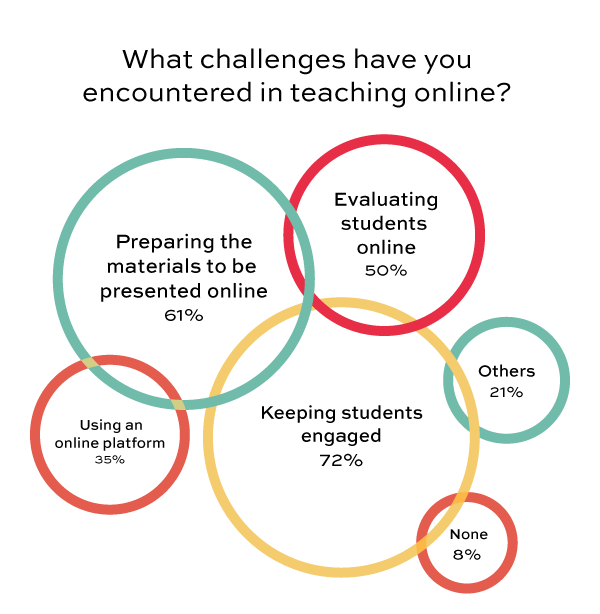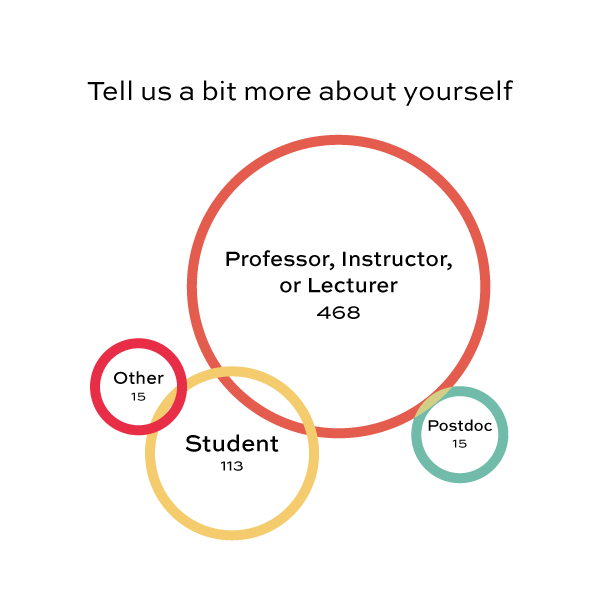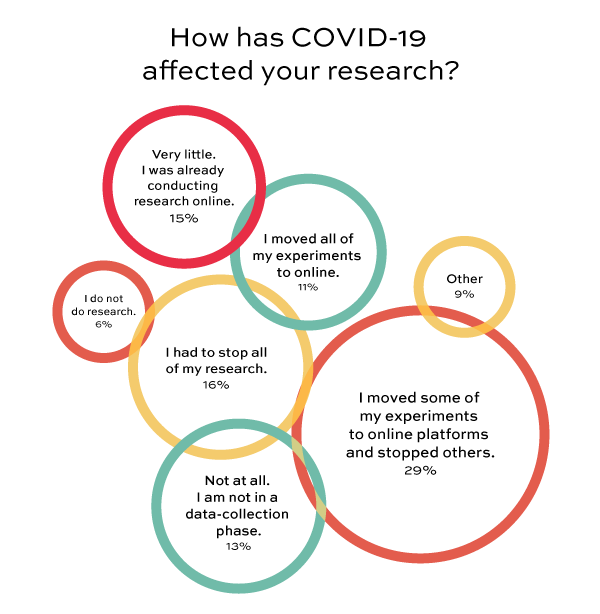Featured
Working Around the Distance

Some six months after the COVID-19 pandemic shuttered universities and upended lives worldwide, a new set of practices has begun to take shape in psychological scientists’ research, teaching, and, for those who are still students, learning. Early this summer, APS surveyed the field to better understand the impact of the pandemic on labs and classrooms, as well as the strategies being used to overcome the challenges associated with moving research and learning from in-person laboratory settings and classrooms to online platforms.
We received 611 responses from students, researchers, and faculty on every continent except Antarctica. The selection of experiences and insights reported here does not present a panacea for all challenges, or even a collection of scientifically supported advice. Rather, it represents a cross-section of personal stories that speak to the enormity of the challenges and potential solutions alike. We are grateful to those who shared, and we hope their insights will provide you with ideas, inspiration, and reassurance.
Teaching: Engagement Challenges, Organizational Solutions
More than half of the survey respondents said
COVID-19 affected their teaching “quite a bit” because they had to start teaching online for the first time. They cited difficulties including keeping students engaged, preparing materials for online classes, evaluating students online, and using online platforms.

Various factors have affected the specific struggles instructors have experienced. Large classes and the applied nature of the content appear to make online teaching more difficult. “I haven’t figured out how to have online class discussion with a class of 86,” said Deb Polk (University of Pittsburgh). “My course is very applied. In class, we talk about situations the students have faced and how to address them. I don’t know how to translate that online.” Steven A. Miller (Rosalind Franklin University of Medicine and Science) identified similar issues, along with the limitations of technology. “It’s hard to gauge student comprehension of material using Zoom. Students seem to provide less feedback online, and reading nonverbal cues in the online environment is also difficult,” he said. And because he teaches quantitative courses, “I’d really need four or five monitors to do what I’d want, and that’s not feasible: Have (1) students in Zoom, (2) syntax, (3), output, (4) Markdown with equations, notes, etc., and (5) web browser in case an online calculator of anything is needed.”
Many instructors identified technical issues on the part of their students as well, including simple Internet access in many cases. “I teach at a community college, so students’ ability to access the information and assignments from home ins not a given,” wrote Rachel A. Rogers (Community College of Rhode Island). For Patrice Miller (Salem State University), “some students were not able to handle this transition at all, and they essentially disappeared.” She noted that many students at her school are also the first in their families to attend university and/or have “incredible personal or family challenges.”

Grading and online evaluations have been another source of concern for instructors. Many students couldn’t immediately see the examinations posted by Garth Lipps. His school, the University of the West Indies in Mona, Jamaica, also suffered overloaded phone lines, online chat support, and email services. Several respondents noted that cheating and plagiarizing have been rife in the switch to online learning.
Despite these and other concerns associated with online teaching, most respondents reported finding at least some resourceful strategies—and a few have even seen a silver lining in the switch. “Students sent inquiries at any time they wanted to ask questions,” wrote Kazuo Mori (Matsumoto University, Japan). Reading and grading students’ work has taken “twice or four times” longer, but that’s “because they revised their essay and resubmitted it again and again, just like we submit our manuscripts to journals. It was very much beneficial to the students. They learned more than before.”
Many successful transitions have reflected instructors’ active efforts to educate themselves on online teaching platforms, technologies, and strategies. Effrosyni Mitsopoulou, a tutor in psychology working in the United Kingdom, took online teaching seminars to learn how to use platforms such as Moodle and Microsoft Teams. Ahu Öztürk (Uludag University, Turkey)said just reading about online teaching helped her a lot. But the most popular way to learn more about online teaching appears to be relying on colleagues who have already taught online or are more technologically savvy.
Juan David Leongómez (Universidad El Bosque, Colombia) came up with a clever solution to address the problem of student connectivity and access while taking into account the importance of interaction: asynchronous teaching, or recording and posting videos that students can watch at their convenience, along with synchronous discussions about specifics in small groups.
Many respondents cited the difficulty of keeping students organized. Some, including Adam Putnam (Furman University), highlighted the importance of checking on students more often than when teaching in person. Dana Basnight-Brown (United States International University Africa, Kenya) said she uses “more discussion questions during online classes, checking in to see how students are managing the technology.” Amy Learmonth (William Paterson University) has required students to attend office hours online. To facilitate communication with students, Salomé Pinho (University of Coimbra, Portugal) adopted “a discussion forum in order to know the difficulties and opinions of the students.”
Instructors underscored the importance of structure and organization for strengthening student engagement. Mark Bardgett (Northern Kentucky University) wrote that he “tried to provide a much more structured learning environment online (e.g., ‘What’s Due This Week’ module) as opposed to the looser daily give-and-take in the classroom” and “tried to remind students on a nearly daily basis about assignments and assessments that were coming up or due.” One respondent noted turning the syllabus calendar into a task checklist that indicated the website each task could be found on. Rachelle Tannenbaum (Anne Arundel Community College) provided some practical advice in this regard: “Be very, very organized in how you present material online. For example, give students a calendar, but ALSO use the learning management system calendar, AND post weekly announcements with reminders.” She also suggested organizing course material into modules or folders with a consistent structure, having consistent due dates, and adding some “personal presence. . . whether it’s sharing information about yourself, or adding cute memes to announcements, students appreciate knowing that there’s a human behind all those emails.”
Online discussions and polls can also foster engagement. Grazyna Kmita (University of Warsaw, Poland) has been “engaging students in online discussions, listening to their opinions, giving small tasks to prepare, and giving feedback.”
As for specific programs that have helped with teaching online, Sandy Venneman (University of Houston-Victoria) said she “learned how to record examples of statistical calculations using Panopto,” a software platform that facilitates lecture recording, screencasting, video streaming, and video content management. Laura Freberg (California Polytechnic State University, San Luis Obispo) likes a Top Hat beta product called Slate, which allows students to ask questions that either the instructor or a classmate can answer.
In terms of more practical strategies to increase learning online, Clementina Hueche Arriagada (Universidad de La Frontera, Chile) recommended beginning classes by asking students how they’re doing (an emotional check-in); keeping classes short (40 minutes max); and not overwhelming students with asynchronous tasks. Emma Ward (Middlesex University, United Kingdom) adopted a “blended approach to foster engagement and variety (i.e., mix of prerecorded lecturettes/nuggets and live tutor-led online sessions for small groups).” APS Fellow Dale Dagenbach (Wake Forest University) suggested asking students to submit discussion questions before and after class, and Arturo Hernandez (University of Houston) tries “to incorporate a written assignment and [provide] feedback on it during class time.”

Instructors also mentioned their use of supplemental resources. Laurel Camp (Marian University) has relied heavily on YouTube and other videos for inspiration. Christopher Thomas (University of Texas at Tyler) suggested looking at open-access content, which often includes materials that can be adapted for the online environment.
Asynchronous Learning With a Teamwork Twist
For Darrell Butler (Ball State University), COVID-19 has provided an excuse to refine an approach he’s used for years. “I decided many years ago to develop a graduate class that would allow students to work asynchronously, except I wanted to allow teamwork for those who were interested.” Instead of a live video platform like Zoom, this class is taught on a website that leverages a discussion board, a gradebook, and resources such as Blackboard and Canvas. “I spent time determining the general goals and specific objectives,” he explained, and then developed weekly assignments. “For example, I wanted graduate students to give professional presentations, and I wanted them to practice good audience behavior (asking good questions and offering socially appropriate comments). I ask students to record their presentations (using YouTube) and post the link to the presentation, a paper copy of the presentation, and any handouts,” preferably in the form of PDF files. “Other students in the class are asked to read their classmates’ papers and/or watch their presentation, then contribute to the discussion board. In addition to the website, I email the students weekly, at least with some feedback on the last assignment they completed.”
Research: Documenting and Diversifying
The closure of universities has made it very difficult, if not impossible, to conduct psychological research in person. About one-third of survey respondents had to move at least some of their experiments to online platforms, and one-sixth had to completely stop their experiments. For those able to move research online, the biggest challenge has been recruiting participants, followed by programming the experiments and paying or assigning credits to participants. On the positive side, some researchers were already conducting research online, and about a fifth reported encountering no problems while doing online research. Researchers mentioned organization and extensive documentation of the research process—already considered a good lab practice before the pandemic—as an important strategy for handling online research.

The validity of data collected online seems to be one of the main problems. APS Fellow Erin Tone (Georgia State University) fears acquiring “junk data” and noted difficulty monitoring participants’ attention and engagement. Jeffrey S. Anastasi (Sam Houston State University) worries about “participants not taking the studies seriously and getting responses that indicate that they aren’t paying attention to the study.” APS Fellow Pamela Smith (University of California, San Diego) reported that “participants seem very distracted (unsurprisingly). Attention-check failure rates have been at 30–50%, especially when trying to use the online student pool at my university. This has led us to be very selective in the work we do online.”
Researchers studying infants and children noted specific concerns related to the impossibility of bringing children to their laboratories or even having children perform tasks reliably while at home with their parents. “I work with toddlers, and the most common reason a participant provides unusable data is that parents help,” wrote Amy Learmonth. “I just don’t see how I can do what I want to do online.” Similarly, researchers conducting experiments with animals said the closure of animal labs has meant they can access labs only to maintain the animals, not to collect data.
Methodological issues have also surfaced—for example, in research that involves measuring reaction times or requires in-person methods such as eye-tracking. Christine Weinkauff Duranso (University of North Georgia) wrote that her research “requires participants to exercise indoors or outdoors, both of which are clearly limited given the pandemic. School fitness centers are closed, public fitness centers are closed, parks have been closed. . .”

Researchers also mentioned difficulty in getting funding for experiments and problems with programming experiments for online platforms. One respondent said she knows a little about coding, but not enough to be truly effective without the assistance of a computer scientist.
APS Past President Morton Ann Gernsbacher (University of Wisconsin-Madison) has extensive experience with online teaching. This summer, she even designed an additional online course and supervised a graduate student to teach it. Among other benefits, she believes web-based higher education can:
- Lead to better mastery by enabling more frequent engagement with course materials (distributed learning over time);
- Optimize performance by allowing students to choose to engage with the materials during their best times;
- Deepen memory by supporting assignments that rely on deeper levels of processing (e.g., assignments that require students to connect information, including the extensive information available online);
- Promote critical thinking by giving students access to large quantities of information that they must evaluate and sift through; and
- Enhance writing skills by relying on discussion boards that foster the ability to write for a broader audience, including professors and peers.
Here are three open-access psychology courses Gernsbacher designed:
Also see these Observer articles featuring Gernsbacher’s insights about online learning:
To overcome the challenges of conducting online research, researchers deployed some crafty strategies. Madison Miller (California State University, Fullerton) has relied on “utilizing social media as a recruitment platform, conducting teleconference interviews, collaborative programs such as Dedoose and Google Drive to effectively communicate and work with other lab mates.” “Zoom meetings have helped extensively,” noted Garth Lipps. “Google Forms allowed us to create a unified data-collection strategy across different countries.”
Another common strategy has involved adapting the duration, and sometimes the design, of studies. Emma Geller (University of California, San Diego) collects data through her university’s subject pool and occasionally on Amazon’s Mechanical Turk. “Even with payment/credit, we struggle to get participants to take the study seriously if it lasts a long time. Our most successful studies are under 30 minutes and include material that participants find interesting. . . . My research is focused on the science of learning and instruction, and I have learned the hard way that difficult topics are hard to use in these studies unless there is real incentive/compensation AND there is a researcher in the room while the participant completes the study. . . . Volunteers simply do not complete studies that take a lot of effort or time.” Min Hooi Yong (Sunway University, Malaysia) said she has changed some parameters of her research to be more suitable to virtual sessions.
Qualtrics and Mechanical Turk emerged as the most popular programs and platforms for conducting online research. Respondents also mentioned using Prolific, which recruits participants from different countries; REDCap, a secure data-collection tool that allows users to build and manage online surveys and databases; and Gorilla, which makes it easier for researchers to create complex experiments and collect data, especially because it allows users to easily control presentation and response times.
Finally, many respondents noted successful collaborations with people already experienced in conducting research online. APS Fellow Alice Cronin-Golomb (Boston University) highlighted the benefits of joining with others in her lab to learn and adapt to the challenges. “Some wanted the opportunity to learn to develop online research studies because we study clinical populations who have trouble with in-person studies anyway. It’s the method of the future.”
Rebecca Farmer Huselid (Hunter College, City University of New York) said she “will post web studies in more places than usual” because her subject pool was closed down, and she has had to be more creative to find volunteers in the community instead of counting on students. This change can be seen as another possible benefit of the new need to do research online: By stepping outside of purely academic settings, researchers might engage in research with more ecological validity, yielding results that generalize to a more diverse population.
APS Microgrants for Online Learning
In June, in response to the COVID-19 pandemic, APS launched an initiative through its Teaching Fund to facilitate the development and dissemination of best practices for teaching psychological science online. The Microgrants for Online Learning program provided grants of up to $1,000 to support projects in six general categories, including webinars and virtual meetings, support for individual classes, scholarship of teaching and learning, and antiracist curricula.
Fifty-six individuals and teams applied for the program, with an average funding request of $960. From those applicants, the APS Teaching Fund Committee selected 25 projects for funding, including the following:
- Interactive Instructional Videos for Teaching Developmental Psychology
- Improv as an Online Teaching Method to Promote Student Engagement and Adjustment in an Introductory Psychology Course
- The Psychology of Eye Contact and Screen Presence in Synchronous, Video Conferencing in Undergraduate Instruction: Protocols for Student Engagement and Motivation
- Addressing Systemic Racism in Clinical Psychology and Related Programs
Learn more about the APS Teaching Fund and other teaching resources from APS.
Learning: Missed Connections and Zoom Fatigue
Students have also been deeply affected by pandemic-related changes. Of the roughly 113 students who responded to APS’s survey, 71% said COVID-19 changed their classes quite a bit because they had to shift to online classes.
A major concern among students has been the reduction or elimination of interaction with peers. “The main drawback to an online course experience is the missing solidarity of being adjacent to peers during demanding work,” wrote Tracy Lamar-Ray (Harvard University). “Proximity fosters innate support.”
Students also cited concerns about what they perceive as the excessive duration of online classes. “There is this ‘Zoom fatigue’ where it becomes very difficult to watch and listen to a lecture after a certain period of time,” wrote Madeline J. Bruce (Saint Louis University). “I think more so due to the stress of COVID-19 and having a routine shift, I’ve had a hard time prioritizing and mapping out what I need to do.”
One student we heard from was Rachelle Kromash (East Tennessee State University), a first-year clinical psychology graduate student and part of the Crime, Addiction, Re-Entry (CARE) Lab supervised by Kelly E. Moore. The program, which investigates the barriers facing individuals that are reintegrating into their communities after incarceration, is very applied, Kromash said, and the lab is still figuring out the details of how to administer group therapy virtually.
Plans for in-person interviews also had to be tabled, forcing Kromash’s lab to shift them online. But she was optimistic, speculating that “we might have a more diverse sample.”
As other students mentioned, the rapid transition to online learning also limited how much content Kromash’s professors have been able to cover in class. Moving to an online platform has changed the nature of class discussions and limited people’s participation, particularly in more applied classes, she added. She suggested that other students affected by the pandemic seek out learning opportunities elsewhere. At the beginning of the pandemic, for example, she signed up to take free statistics courses. “And, remember, you’re not the only one in this situation,” Kromash said. She’s found it helpful to speak with others in fields like nursing, who may be even more profoundly affected by the shift away from in-person training.
We want to hear from you. Continue the conversation online by sharing how the move to online research and education has affected you. Comment on this article at psychologicalscience.org/observer/working-around. Or email us at [email protected].





Comments
Ludmila: Thanks for your work on the “Working Around the Distance” article in the September Observer.
The narrative was clear and interesting – I like the colored circle/percentage graphics!
Jerry
APS regularly opens certain online articles for discussion on our website. Effective February 2021, you must be a logged-in APS member to post comments. By posting a comment, you agree to our Community Guidelines and the display of your profile information, including your name and affiliation. Any opinions, findings, conclusions, or recommendations present in article comments are those of the writers and do not necessarily reflect the views of APS or the article’s author. For more information, please see our Community Guidelines.
Please login with your APS account to comment.